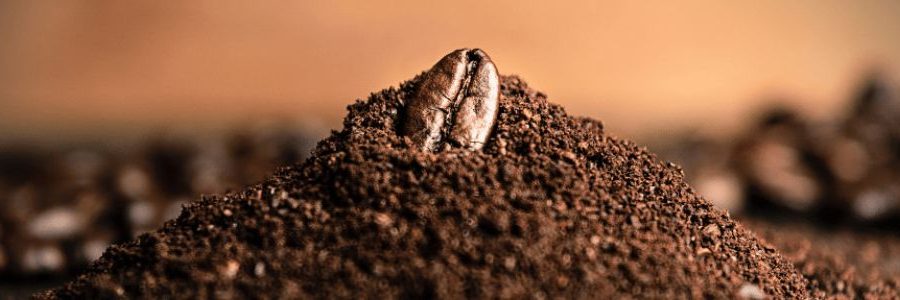
This article is a quick guide to grinding your own coffee beans at home!
I have read many books, researched online and been making coffees at home for many years, and I am sharing with you the tips I have learnt for you to get started without getting all geeky on grinding your coffee beans.
Why grind your coffee beans at home?
Many benefits come with grinding your coffee beans at home. The main reason to grind your coffee beans at home is that whole beans last longer, up to 2 weeks from roasting, and ground coffee only lasts for a few days. This is assuming you don’t put the coffee in a sealed jar which is preferred. Also, freshly ground coffee has a fuller aroma and flavor, which means you’ll be able to enjoy the true taste of your coffee without any unwanted flavors.
Benefits: Fuller aroma and flavor; freshness; no unwanted flavors
Note: The fresher the whole beans, the better. Ground coffee only lasts a few days, so it’s best to grind a small amount at a time or enough for the next few days.
Why does coffee grind size matter?
Coffee grinds come in a variety of sizes, from coarse to fine for certain machines the coarser the coffee ground size, the better. In other words, you will want to use a very coarse grind for the French press and an even finer one for espresso. But what if we’re not making any special coffees? Just regular drip coffee? What should be our setting then? Most likely medium or medium-coarse (depending on your machine).
The general rule of thumb is for longer brewing methods the larger the grind size and the quicker the brewing method the finer the grind size. It can take a bit of testing to get your coffee just the way you like it. Start with the coffee grind size chart pick the appropriate size, make a cup of coffee and taste it.
If the coffee is watery and a bit acidic the coffee grinds are too coarse so you will need to grind them a bit finer.
If the coffee tastes bitter the grind size is too fine and you will need to grind a bit coarser.
The amount of time the coffee is brewing and the temperature of the water can also affect the flavor.
Coffee grind size chart
|
Extra fine grind |
This grind size is used for making turkish coffee. |
|
Fine grind |
This grind size is used for espresso machines, Aero press and moka pots. |
|
Medium grind |
This grind size is used for Pour over and drip coffee methods. |
|
Coarse grind |
This grind size is used for French press. |
|
Extra coarse grind |
This grind size is used for cold brew coffee. Coffee that brews for a long time. |
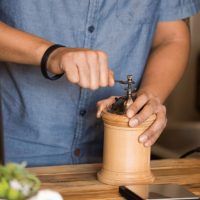
Coffee grinders burr vs blade
For coffee lovers, the differences between blade and burr grinders can be confusing. There are many brands of both types of grinder on the market with various price points for different budgets. Which one is right for you?
The most common difference between these two types is that a blade grinder chops up the beans into small pieces while a burr grinder crushes them to create more uniform size particles. The end result is that grinding coffee with a blade grinder produces inconsistent grinds which may lead to under-extracted or over-extracted flavors in your cup of joe depending on how long it has been since brewing. A burr grinder produces more consistent results so every sip will have an even balance of flavor notes.
What to do next?
Get a fresh bag of whole coffee beans, get out your grinder pick the size of coffee grinds for your brewing method and start testing to get a perfect coffee! Enjoy!
Check out our other pages to learn more while you grab a coffee and enjoy!

Subscribe and get updates to your inbox!
Latest Coffee Tips and Blogs!
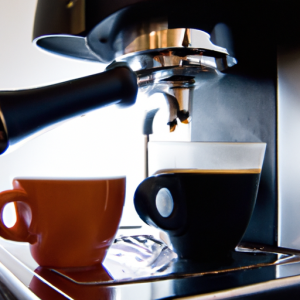
What Is The Difference Between A Drip Coffee Maker And An Espresso Machine?
Discover the key differences between a drip coffee maker and an espresso machine. Find the perfect coffee maker for your needs. Explore their unique features now!
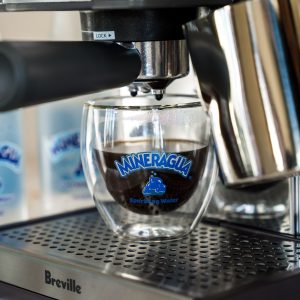
Can I Use Flavored Coffee Beans In My Coffee Maker?
Discover whether you can use flavored coffee beans in your coffee maker. Learn about compatibility, effects, benefits, and tips for brewing a perfect cup!

How Do I Maintain The Taste Quality Of My Coffee Maker’s Brew Over Time?
Learn how to maintain the taste quality of your coffee maker’s brew over time with these practical tips and tricks. Keep your coffee delicious and flavorful with simple steps. Enjoy the perfect brew for years to come.
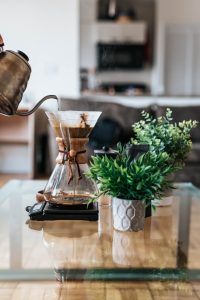
Can I Use Cold Water Instead Of Hot Water In My Coffee Maker?
Discover whether using cold water in your coffee maker is a viable alternative to hot water. Explore the benefits and drawbacks, and learn how to optimize your brewing process for the perfect cup of coffee.
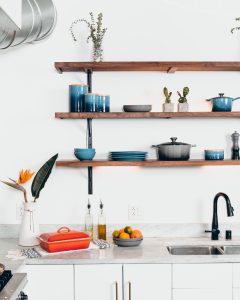
How Do I Choose The Right Coffee Maker For My Needs?
Looking for the right coffee maker? Learn how to choose based on budget, coffee preferences, brewing capacity, convenience, space, type, and additional features.
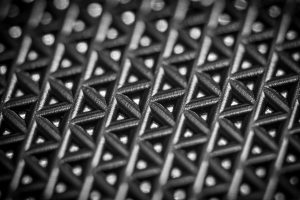
What’s The Purpose Of The Steam Wand On An Espresso Machine?
Discover the purpose of the steam wand on an espresso machine! Learn how it creates the perfect frothed milk essential for your favorite espresso-based drinks.
